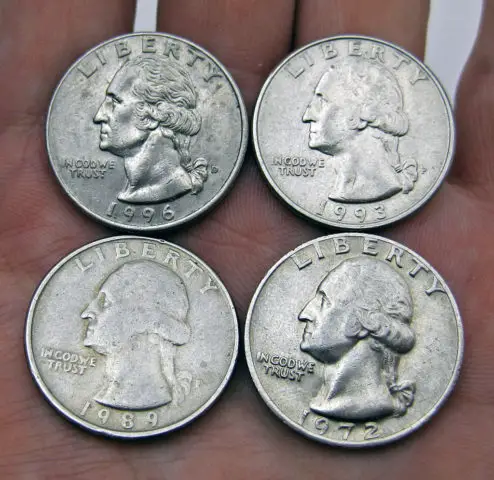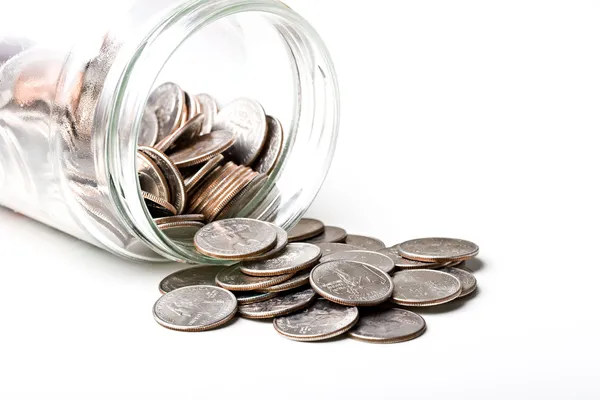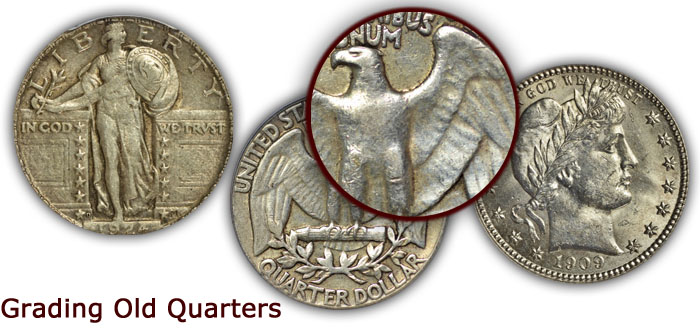Old Quarters
Coin Values Moving with Precious Metals: Up-Dated 2/8/2021: Gold $1813 Silver $26.90
Pre 1965 silver dimes, quarters, half dollars and silver dollars are all heavy with 90% silver and worth many times their face value. With today's high value of silver; $29.48 per ounce as of 2/1/2021 your old quarters are becoming surprisingly valuable. Wellington's freshest vietnamese fusion restaurant, located in the heart of the CBD. Experience the taste for yourself at 39b, Dixon St. Old Quarter consists of 2 building located within the Portuguese heritage zone. The main building hosts the reception, cafe, dorms and deluxe rooms. The rest of our rooms are located 250m away from the main building in a 200 year old house that is equipped with wi-fi, hot water and a common room.
A quick separation of quarter values is the date 1964, the last year of silver era quarters. All silver quarter are worth a minimum of $4.52 each as of 2/8/2021 . Modern quarters minted beginning 1965 are worth a premium in Mint State (no wear) condition. Follow a step by step method to identify the series of your quarter, variety, date and mintmark combination, leading to special qualities and above average value.
Steps Leading to Value:
- Step 1: Recognize the Different Series of Quarters - US quarters were minted in a variety of design series. Each is unique and have their share of scarce to rare issues. Identify the different series to begin narrowing value.
- Step 2: Date and Mintmark Variety - Dates are collected and valued individually. Dates combined with mintmarks are each identified as to rarity and demand.
- Step 3: Grading Condition - Judging condition recognizes a grade used to narrow how much each quarter is worth. A close inspection comparing to images is needed.
- Step 4: Special Qualities - Old to modern quarter series have special qualities collectors seek. These qualities are examined to accurately evaluate your coin.
Minted since 1796 there are many rare dates, mint marks, and scarce quarter varieties. Often reaching into the hundreds of dollars.
How to determine quarter values begins with identifying the denomination and series. Examine your coin and compare to the following images to find a match.
Note: Images within blue borders are Links to the Quarter Values series.
Step 1: Recognize the Different Series of Quarters
With a high starting price and quickly rising into the thousands. All early Bust quarters are scarce to rare. Avidly sought by dealers to meet the demand of collectors. Compare your coins to the grading images and value charts.
A long running series with many rare dates and varieties. Because condition of these Seated quarters is important to value, grading is important. Discover how much they are worth, compare your old quarters to the grading images and value chart listing all the dates and mintmarks.
Collectors are adding to their collections and increasing the demand for Barber Quarters. Your old quarter is worth much more today. From $6.49 each to many hundreds for the rare dates and mintmarks. Judge condition and worth of your coins using the grading images and coin values chart.
Everyone agrees it is a beautiful coin. Easily one of the most popular coins with collectors. Discover the value that strong demand has placed on Standing Liberty quarters. Grading images to evaluate their condition and price chart listing all dates, mint marks and varieties.

Their value is tied closely to the price of silver. However, a few rare dates and mintmarks of the early years of the Washington quarter series stand out, if found in high condition. Compare you coins to the grading images and separate then by condition. Follow your coin's value on the silver charts, and check for rare dates and mintmarks.
Step 2: Date Plus Variety and Mintmarks are Identified
Many serious collectors are assembling sets of quarters. Each date becomes an important part to these sets of coins. Numbers minted yearly vary and over time the scarce and rare issues are noticeably difficult to obtain, raising values. Each series is also interesting because of small changes to designs introduced, sometimes carrying the same date. Recognition of varieties within years also impacts value. Quarter series are full of subtle varieties.
Mintmarks are next considered in the value process. Early quarters; 1796 until 1840, were all minted at the Philadelphia mint, the only mint at the time. Mintages were in the range of two to three hundred thousand per year with a few low production years. 1835 is unusual with close to two million struck.
Branch mints began striking quarters in 1840 with the New Orleans mint. To identify branch mints - 'Mintmarks' - were added to the designs. An 'O' mintmark identifies New Orleans coinage. Other branch mints became important to the quarter series, San Francisco, Carson City, and Denver. All in various quantities struck quarters over the years. Usually branch mints struck lower numbers of quarters creating the scarce variety for the year. Mintmark identification is now important and reflected on value charts. Mintmarks and location on the coins are detailed on series pages.

🔎Step 1 above are image links to match your coin. Visit the series page for value charts and details on how to value your old quarters.
Step 3: Grading Condition Quarter Values are Conditional
Grades listed on value charts are a definition of a coin's condition. Amount of wear as it progresses; from none to very worn develops in recognizable stages. Each stage of wear is judged and assigned a grade matched to a standard. First minted, a coin is in Mint State condition and defined as Mint State grade.
Mint State Grade: A coin with no wear to any surface is defined as Mint State. Each series of quarters have specific high points to the design prone to first signs of wear. A close inspection is needed to determine if wear has smoothed and flattened any of these high spots. Grading in-depth is covered in each series and done comparing to images, video, and descriptions.
Extremely Fine Grade: An Extremely Fine grade quarter retains all major design elements in strong relief. Wear is noted; however, only small amounts of flatness is seen on the highest finer detail. A Standing Liberty quarter is judged looking at the amount of wear on Liberty's shoulder and knee. Overall, the appearance is sharp and well defined.
Fine Grade: Wear is easily visible on a quarter in Fine grade. Moderate wear has smoothed all high areas. A distinction between Fine and a lower grade is flattened areas do not connect. Separation, even if slight, is evident from Liberty's face and hair, major feathers of the eagle designs clear, and lettering of the legends is bold.

Good Grade: Once noticeable heavy wear has smoothed the majority of the design, the coin is now in Good grade. Its smooth surface is without any fine detail. Bust quarters and Barber quarter with large portraits of Liberty are portrayed in outline. Inner lines to hair, headbands, and indications of a gown are faded to smooth.
Judging a quarter's condition to determine a grade is done by comparing the coin to images of grade standards. Additional video helps to identify many subtle points to grading quarters.
🔎Step 1 image and text links lead to series pages of in-depth coverage. Each series page covers grading quarters in detail. Close-up images and descriptions of grades are used to judge condition.
Step 4: Special Qualities Enhancing Value
A certain amount of personal judgement goes into recognizing special qualities. Quarters are first viewed for their overall impression. Is the condition crisp enough to see most detail of the design? Is the toning, and color pleasing and enhancing the detail? Does a mark or rim dent catch the eye?
Old Quarters With No Dates
Eye appeal plays a role to solidify the value of coins. A pleasing quarter is marketable when compared to an example with less appeal and distractions.
Most old quarters are in circulated, worn condition. Among circulated grades, each collector develops an opinion of the traits to an appealing coin. Lightly toned verses darkly toned. Marks on the surface are acceptable, if obscure. Wear, only to a certain degree. Coins with positive appeal in just these three traits are surprisingly a challenge to find.
The Bust quarter in the top row is worn, however, still pleasing. A scarce coin with hair and gown detail visible, acceptable toning, and mark free surfaces, a collectible coin.
Seated Liberty quarters are full of small details. Toning enhances the visibility of the design on the 1875 quarter. Minor circulation wear is visible but not distracting. Open fields behind Liberty are free of marks and abrasions. An eye appealing Seated Liberty quarter is sought by collectors.

A Standing Liberty quarter in Extremely Fine grade remains well detailed. All major and most minor detail is visible. Lightly toned and one special feather stands out. A full date is visible. The early years sub-variety of the series included the date, high in relief, and quickly wore smooth. A bold date visible is appreciated by collectors.
Consider your coin with aesthetics in mind. An honest rating gives insight to value.
🔎Match your coin to the image links in Step 1 and visit; how to determine in-depth quarter values of your coin.
Coin Values CoinStudy Articles
Continuing with special qualities of coins. Many of your old silver quarter values are tied closely to the price of silver. Quarters dated 1964 and earlier are 90% silver and worth many times their face value. With today's high value of silver your old coins are becoming surprisingly valuable.
Scarce and rare quarters are found in all the design series. Early era quarters, 1796 to the 1890's are all scarce. Quarters of the twentieth century are very popular today, with certain key dates considered rare.
A quick reference to US Coin Values. Images to identify each coin and minimum values for each type. Using the step by step method to how much coins are worth. Bookmark the online value charts to phone.
Follow the videos with close-up views highlighting the subtle changes from one 'grade' of condition to the next. Master index of grading videos lists series beginning with pennies to silver dollars. Values within the different series of coins are dependent on condition just as importantly as dates and mintmarks. It is possible to detect the difference of these finer points of value.
Recommendations on basic supplies that greatly improve coin storage. Providing for safe handling, preserving of value and organizing your box of old coins.
Do you have more old coins and need their values? Quarter values begin here, for your other coins, visit the home page.
Old Quarters Baton Rouge
★Coin Values Discovery... finds Quarter Values and...
All old US coin values. It is an excellent index with images and text links to all coin series, from Cents to Gold. Value charts, grading images and descriptions uncover how much your box of old coins is worth.
An understanding of the Value process:
Denomination Series Date Mintmark Condition
Value is the foundation to the Selling of your coins process. Always begin with an accurate value before selling your old coins.
Indian coins were started during the period of 1st millennium of BCE which belongs to the 6th century. These coins were made of copper and silver in the initial stage. It is also called as Karshapanas or Pana.
The ancient Indian coins standard weights are indispensable. The basic metric system of north India was Rati seed. In south India people use their monetary system in the form of seeds of indigenous origin that is Manjadi and Kalanju or Molucca.
Punch Marked coins
Old Quarters 1776 1976
Punch Marked coins are the earliest coins of India. We have got information about the Purana Coins in the literature but we have not seen that coin. Punch Markeed coins are in the metal of Gold, Silver and Copper. Silver and Copper coins have been seen unearthed but we can see the Gold coins in literature. Punch Marked coins have no date, year and name of the king is not mentioned only symbols are seen in this coin. The character of these symbols are in astronomical, religious and mythological. The marks of the coins are sun, the elephant, cow, chariot, horse, bull, jackal, tree, tiger or lion and Dharmachakra. These coins were circulated in north and south India in the same time.
| Rare Raja Raja Chola Coin |
| Rare South Indian Coins |
| One Naya Paisa |
| Two Naya Paisa |
| Three Paisa Coin |
| Five or 5 Paisa |
| Ten or 10 Paise coins |
| Twenty or 20 Paise Coin |
| Twenty Five or 25 Paise Coins |
| Fifty or 50 Paise Coins |
| One or 1 Rupee Coins |
| Two or 2 Rupees Coin |
| Five or 5 Rupees Coin |
| Ten or 10 Rupees Coin |
| One or 1 Pice Coin |
| Commemorative Coins of India |
| Ten or 10 Paise Commemorative Coins |
| Twenty or 20 Paise Commemorative Coins |
| Twenty Five or 25 Paise Commemorative Coins |
| 50 Paise Commemorative Coins of India |
| 1 Rupee Commemorative Coins of India |
| Two or 2 Rupee Commemorative Coins |
| Five or 5 Rupee Commemorative Coins of Indian |
| Ten or 10 Rupees Commemorative |
| British East India Company -1⁄12 Anna Information and Value |
| British East India Compan 1⁄2 Pice Coin |
| British East India Company One Quarter Anna Coins |
| Half Anna Coin British East India Coin |
| George VI - One or 1 Pice Hole Coin |
| George VI - One Rupee Half Rupee Quarter Rupee |
| Two or 2 Annas Coin Information |
| British East India Company - Quarter 1⁄4 Silver Coin |
| British East India Company - Half or 1⁄2 Rupee Silver Coin |
| British East India Company - One or 1 Rupee Silver Coin |
| One or 1 Rupee Note Information |
| Two or 2 Rupees Note |
| Five or 5 Rupees Note |
| Ten or 10 Rupees Note Information |
| Twenty or 20 Rupees Note |
| Fifty or 50 Rupees Note |
| One Hundred or 100 Rupees Note |
| Two Hundred or 200 Rupees Note |
| Five Hundred or 500 Rupees Note |
| One Thousand or 1000 Rupees Note |
Old Quarters
Quick Enquiry
Old Quarters
*** For Buying and selling quires you can contact us to this Mail Id: gkarthikeyan2k@yahoo.com *********